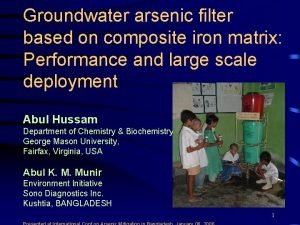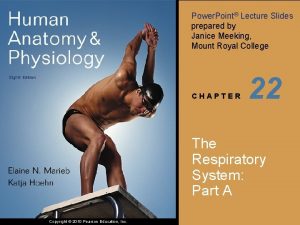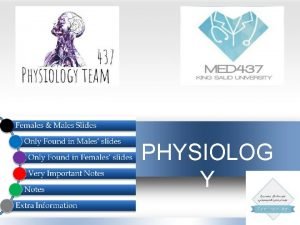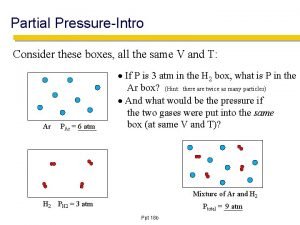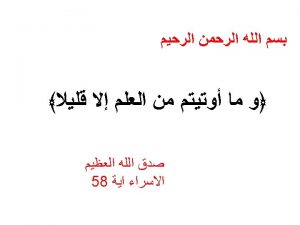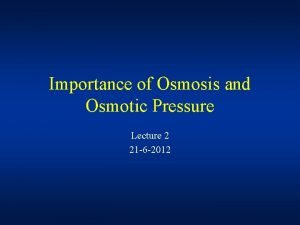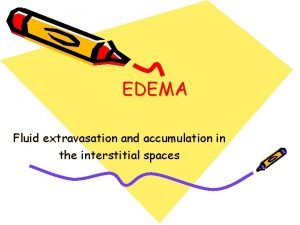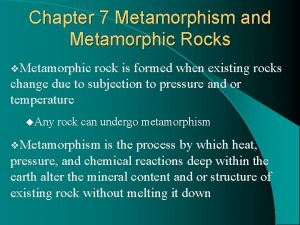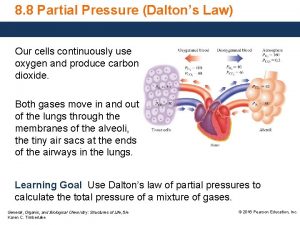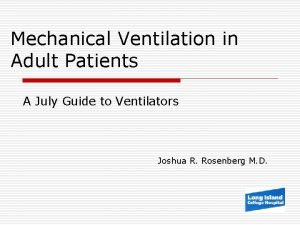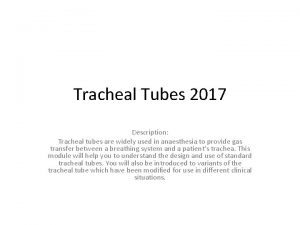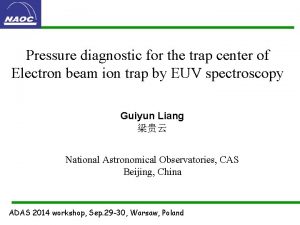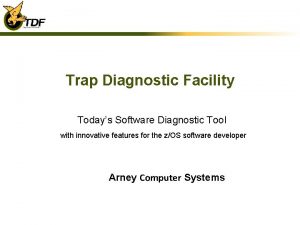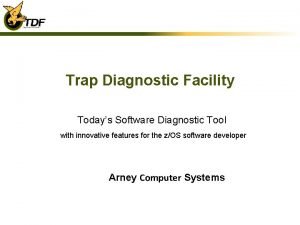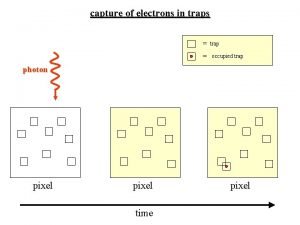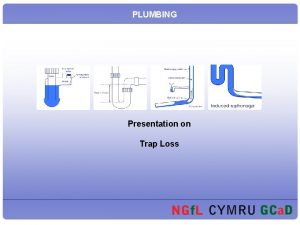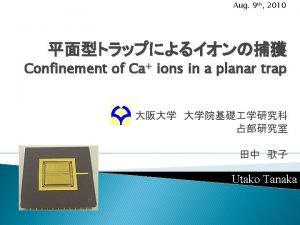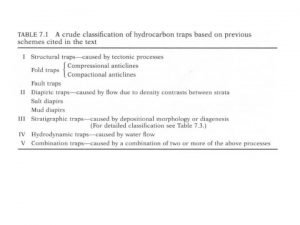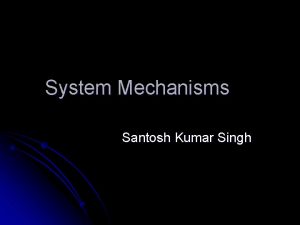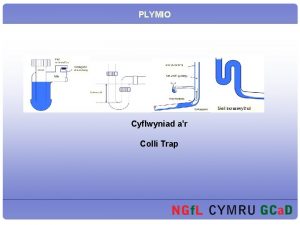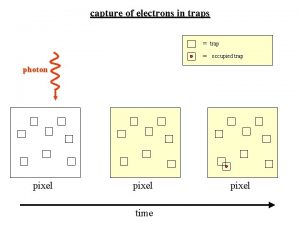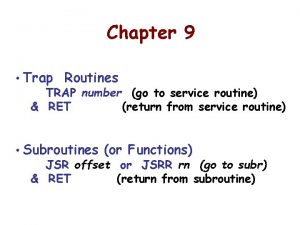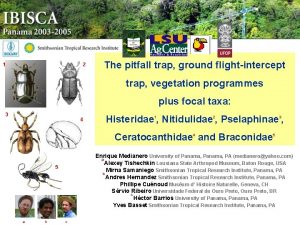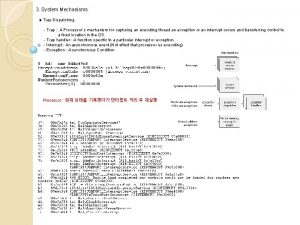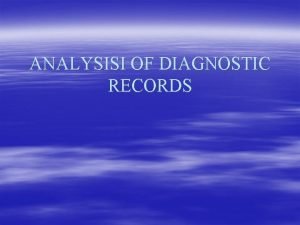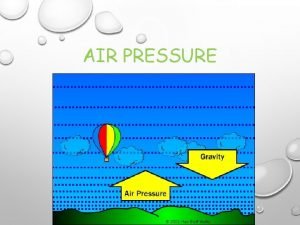Pressure diagnostic for the trap center of Electron































- Slides: 31

Pressure diagnostic for the trap center of Electron beam ion trap by EUV spectroscopy Guiyun Liang 梁贵云 National Astronomical Observatories, CAS Beijing, China ADAS 2014 workshop, Sep. 29 -30, Warsaw, Poland

Outline • Brief background • EBIT and the EUV spectroscopy • Data analysis (1) Density diagnostic (2) Pressure diagnostic in EBIT center

Brief background Principle of electron beam ion trap (EBIT): electrons from electron gun is accelerated to tens of ke. V, then ionize material injected. It has a powerful ability help us to benchmark theoretical model: • Produce ions of a desired charge state Epp et al. (2010) Jp. B; Beiersdorfer (2003) ARAA

• Determine which lines come from which charge stage. • Study emission by selecting specific line formation processes Liang et al. (2009) Ap. J; Martínez Ph. D thesis (2005)

However, the EBIT behavior is affected by pressure or vacuum of the trap, which is a fundamental parameter in experiments Usually, the pressure is measured by ionization gauge method for high vacuum (10 -3 — 10 -10 mbar): Principle: By measuring the electrical ions produced when the gas is bombarded with electrons. Accuracy: depends on the chemical composition of gases being measured, corrosion and surface deposits

• The central space is very small (55 mm× 10/3 mm) to located a vacuum gauge. • It is separate from other space by cooling system and Helmholtz coils • What we measured pressure (10 -8 mbar) represents the value around the chamber wall. Epp Ph. D thesis (2007)

In theory, charge stage distribution will be smeared out due to the Charge-exchange between trapped ions with residual neutral gas, that can be regarded as a ‘recombination’ gauge. The neutral density is proportional to the pressure in the trap center.

• X-ray on planetary/cometary atmospheres due to CX process Observation comet and vernus Lisse et al. (1996) Bodewits et al. (2006) Simulation of solar wind ions on Martian, Modolo et al. (2005) • What components in solar wind? • What velocity of these ions? • Where these ions from on solar surface?

EUV spectra measurement in EBIT • Heidelberg FLASH/Tesla EBIT • EUV spectrometer Grazing grating: 2400 l/mm CCD 2048× 2048, 13. 5 m/pixel • Beam energies: 100 — 3000 e. V • Energy step: 10 or 20 e. V • Photon energies: 90 — 260 Å • Photon resolution: ~0. 3 Å • Pressure: ~ 10 -8 mbar Epp Ph. D thesis (2007)

Above shows the resultant spectra of highly charged iron ions. Any analysis is based upon the good spectral modelling.

Data analysis Fitting to obs. Analysis model Output: emissivity Approx. coding Atomic data Physics: Liang et al. (2014) Ap. J

Line identification Cross section is from FAC and AUTOSTRU CTURE

Iobs( ) = Ai(E) ( , E) Here, Ai(E) is the ionic abundance as a function of beam energy, ( ) is the efficiency of the spectrometer, and ( , E) is the line emissivity, where E refers to the beam energy There is two method to generate the ‘evolution curve’ Ai(E) • Global fitting • Single line fitting Line emissivity: ~ (E) or =Aij. Nj • For resonant lines, the uncertainty of (E) is within 5% • Cascading effect will have <10% contribution for line emissivity.

Adopting global fitting, at each pixel channel and at a given energy,

Evolution curve of ionic fraction

Charge state distribution

EUV spectroscopic application to EBIT 1. Effective electron density in trap

Line ratios involved emission lines with its upper level is dominantly populated from metastable levels • Resultant electron density is about 1012 cm-3

2. Overlap factor between e-beam and trapped ions • The overlap factor depends on the ionic charge

• The module of charge stage distribution Plasma type: Thermal EBIT/R with escape Phi. BB CXERec

• Charge exchange Treatment of CX cross-section: Donors: • • H (13. 61) He (24. 59) H 2 (15. 43) CO (14. 10) CO 2 (13. 78) H 20 (12. 56) CH 4 (12. 6) • Default is parameterized Landau-Zener approximation • Collection from published data (RARE!) • Hydrogenic model

2 s 2 p 3 d • Obtain the average energy of captured nl (3 d) orbital • Using parameterized MCLZ approximation obtain the nlmanifold CX cross-section • Statistical weight to get the nl. J -resolved cross-section In Hydrogenic model: • Obtain the principle quantum number with peak fraction. 2 s 2 2 p Si 10+ projectile (ground) Smith et al. (2012) • ‘Landau-Zener’ weight as • Statistical weight

Monte-Carlo method is adopted to obtain optimized neutral density with 300× 300 tests • At low beam energies, the uncertainty (~10 e. V) may be due to estimation of space charge potential, because only beam current at high energy recorded for #Fe 1008 and #Fe 1208

Fe XVIII Fe XIX Fe XXI

The resultant neutral density at the trap center without consider the overlap factor between electron beam and ion cloud At a current of 165 m. A, and the beam energy 2390 e. V, the largest central electron density is about 1. 4× 1013 cm-3 An effective electron density is diagnosed to be 2. 6× 1012 cm-3

Fe XVIII Fe XIX The resultant pressure in trap center is obtained, that is still higher than expectation.

In the central region, NO ‘quantitative’ value available, except for a ‘qualitative’ estimation. The present diagnostic strongly depends on the underlying model. A further analysis is on-going.

Coulomb heating: Energy transfer between ions: Ion escape (radial, axial): Energy loss due to escaping ions: Vradial Vaxial=100 V Penetrante et al. (1991)

Evolution of ions and ionic temperature: Penetrate et al. PRA (1991)

Summary • Brief background • EBIT and the EUV spectroscopy • Data analysis a. Density diagnostic b. Diagnostic for overlap factor between beam and ions c. Diagnostic to the pressure in the EBIT center

Thanks you for your attention!
 Once upon a time there were three billy goats gruff
Once upon a time there were three billy goats gruff Sono arsenic filter
Sono arsenic filter Elmslie trillat
Elmslie trillat Pressure support vs pressure control
Pressure support vs pressure control Continuous bedside pressure mapping
Continuous bedside pressure mapping Intrapleural pressure
Intrapleural pressure Oncotic vs osmotic
Oncotic vs osmotic How to find partial pressure from total pressure
How to find partial pressure from total pressure Intrapleural pressure
Intrapleural pressure Regional metamorphism
Regional metamorphism ütube
ütube Bernoulli rule of integration
Bernoulli rule of integration Factors affecting gfr
Factors affecting gfr Oncotic pressure
Oncotic pressure Factors affecting surface tension
Factors affecting surface tension Oncotic pressure vs hydrostatic pressure
Oncotic pressure vs hydrostatic pressure Confining pressure vs directed pressure
Confining pressure vs directed pressure Adrenaline
Adrenaline How to find partial pressure
How to find partial pressure Peak pressure ventilator
Peak pressure ventilator Bevel of et tube
Bevel of et tube High pressure and low pressure
High pressure and low pressure Fspos
Fspos Typiska novell drag
Typiska novell drag Tack för att ni lyssnade bild
Tack för att ni lyssnade bild Ekologiskt fotavtryck
Ekologiskt fotavtryck Shingelfrisyren
Shingelfrisyren En lathund för arbete med kontinuitetshantering
En lathund för arbete med kontinuitetshantering Särskild löneskatt för pensionskostnader
Särskild löneskatt för pensionskostnader Personlig tidbok fylla i
Personlig tidbok fylla i Sura för anatom
Sura för anatom Vad är densitet
Vad är densitet

